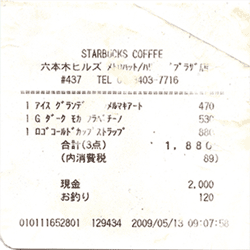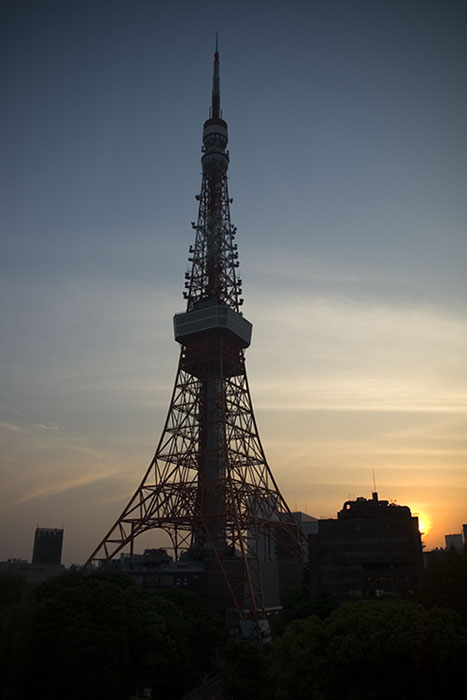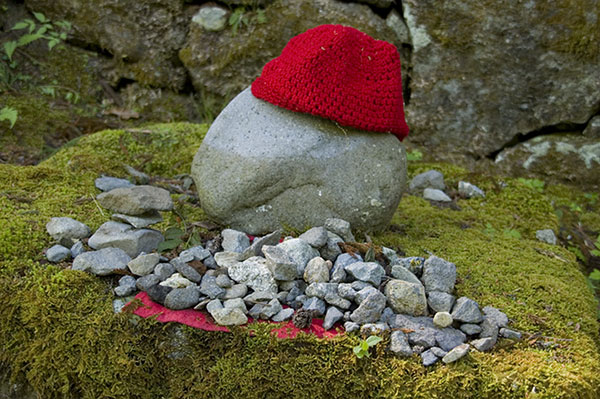 I wanted to save it forever; alas, it’s printed on thermal paper. My order of an iced caramel macchiato is now partially illegible. Aaron’s dark mocha frappuccino and my cell phone strap are only slightly more legible. So, best if I immortalize our receipt in bits and bytes while I still can.
I wanted to save it forever; alas, it’s printed on thermal paper. My order of an iced caramel macchiato is now partially illegible. Aaron’s dark mocha frappuccino and my cell phone strap are only slightly more legible. So, best if I immortalize our receipt in bits and bytes while I still can.
I was so proud of myself for learning how to order my favorite drink: aisu kyarameru makiato. Turns out that, as does nearly every other food service establishment in Japan, Starbucks has an English menu (which the barista at the Metro Hat Starbucks in Roppongi graciously brought out for us without us even asking). Aaron just pointed at the picture of the HIGHLY AWESOME Dark Mocha Frappuccino, said “grande,” and he was good to go.
Sometimes I just try too hard.


